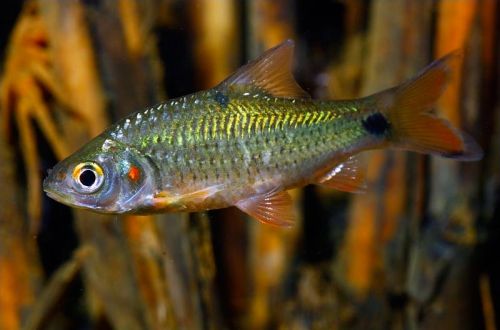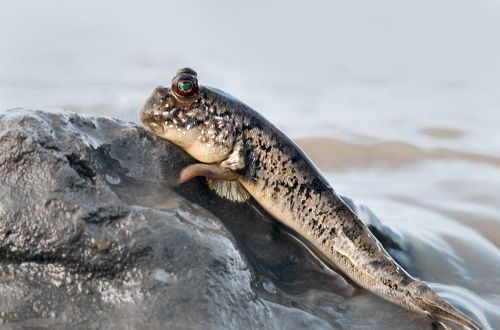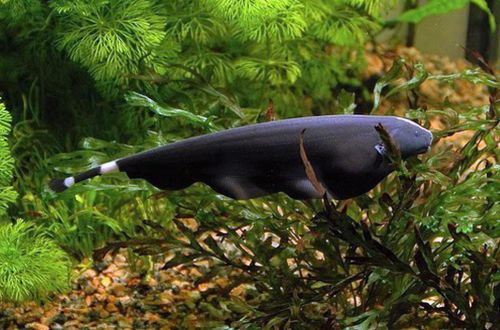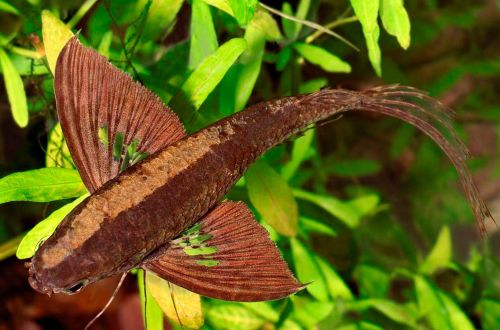
Javanese Barbus
The Javan barb, scientific name Systomus rubripinnis, belongs to the Cyprinidae family. Rather large fish, differs in endurance and relative unpretentiousness. Rarely found in the aquarium trade, except in the Southeast Asian region.

Kaundan
Habitat
Comes from Southeast Asia. Despite the name, it is found not only on the island of Java in Indonesia, but also in vast territories from Myanmar to Malaysia. It inhabits the basins of such large rivers as the Maeklong, Chao Phraya and Mekong. Inhabits the main riverbeds. During the rainy season, as the water level rises, it swims to flooded areas of tropical forests for spawning.
Mubo nga impormasyon:
- Ang gidaghanon sa aquarium - gikan sa 500 ka litro.
- Temperatura – 18-26°C
- Bili pH - 6.0-8.0
- Katig-a sa tubig – 2–21 dGH
- Type sa substrate - bisan unsa
- Paglamdag - gipaubos
- Brackish nga tubig - dili
- Ang paglihok sa tubig - kasarangan o kusog
- Ang gidak-on sa isda mao ang 20-25 cm.
- Pagkaon - bisan unsang pagkaon
- Temperament - kondisyon nga malinawon
- Pagtipig sa usa ka grupo sa 8-10 nga mga indibidwal
Description
Adults reach a length of up to 25 cm. The color is silvery with a greenish tint. The fins and tail are red, the latter has black edges. A characteristic feature of the species is also the red markings on the gill cover. Sexual dimorphism is weakly expressed. Males, unlike females, are somewhat smaller and look brighter, and during the mating season, small tubercles develop on their heads, which are practically invisible the rest of the time.
Presented from different regions, such as Thailand and Vietnam, may vary slightly from each other.
Food
An omnivorous species, it will accept most popular aquarium fish foods. For normal growth and development, plant additives should be provided in the composition of the products, otherwise it is likely that ornamental aquatic plants will suffer.
Pagmentinar ug pag-atiman, kahikayan sa aquarium
Tank sizes for a small flock of these fish should start at 500-600 liters. The design is arbitrary, if possible, it is desirable to arrange an aquarium in the likeness of the bottom of the river: rocky soil with boulders, several large snags. The lighting is subdued. The presence of an internal flow is welcome. Unpretentious mosses and ferns, Anubias, capable of attaching to any surface, are suitable as aquatic plants. The remaining plants are unlikely to take root, and are likely to be eaten.
Successful keeping of Javanese Barbs is possible only in conditions of very clean water rich in oxygen. To maintain such conditions, a productive filtration system will be required along with several mandatory maintenance procedures: weekly replacement of part of the water with fresh water and regular cleaning of organic waste (excrement, leftover feed).
Kinaiya ug Pagkaangay
Active schooling fish, does not mix well with smaller species. The latter may become an accidental victim or become too intimidated. As neighbors in the aquarium, it is recommended to purchase fish of similar size that live in the bottom layer, for example, catfish, loaches.
Pagpasanay / pagpasanay
At the time of this writing, there is no reliable information about the breeding of this species in a home aquarium. However, the lack of information is due to the low prevalence of the Javan barb in the aquarium hobby. In its natural habitat, it is often bred as a forage fish.
Mga sakit sa isda
Sa usa ka balanse nga ekosistema sa aquarium nga adunay mga kondisyon nga piho sa mga espisye, panagsa ra mahitabo ang mga sakit. Ang mga sakit tungod sa pagkadaot sa kinaiyahan, pagkontak sa masakiton nga isda, ug pagkasamad. Kung dili kini malikayan, labi pa bahin sa mga sintomas ug pamaagi sa pagtambal sa seksyon nga "Mga sakit sa isda sa aquarium".





